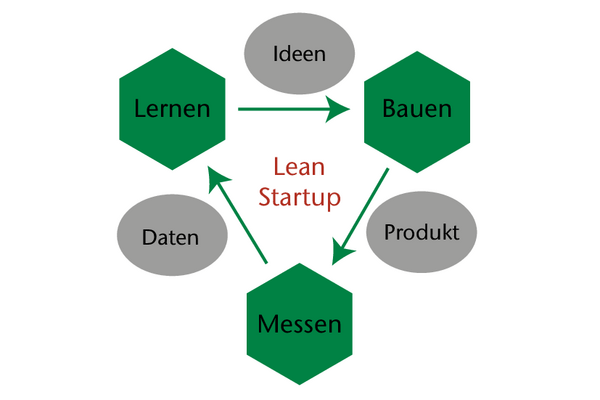Startup ABC #4: Lean Startup
Lean Startup
According to a study by the business analytics platform "CBS Insights", the lack of a customer-facing need is one of the main reasons startups fail. Moreover, it often happens, that the financial resources are exhausted before the startup could gain momentum, that potential customers were ignored or that the competition was faster. Lean Startup is a way to counteract these points. What Lean Startup is, how it works and how you can apply it, you will learn in the following article of our "Startup ABC".
What is Lean Startup?
Lean Startup is a method with the goal of building a startup "lean" - that means as quickly as possible and with as few resources as possible. The core of the method is the Minimum Viable Product (MVP) and a repeating cycle of "build - measure - learn". The goal is to learn as much as possible about potential customers and their requirements for a product as quickly as possible and thus to build up a business with this product in a short time and with comparatively few resources.
How exactly does Lean Startup work?
Even though the cycle is called "Build - Measure - Learn", the method actually starts with learning. So it starts by first finding out if the target group actually has the problem we assume they have. So the question to answer is this: Does the target group see the problem we have identified as such, and does it want a solution to it?
This can be clarified very well by means of interviews and observations, which is why these often form the starting point of the Lean Startup method.
If it turns out that our target group actually has the problem we assumed and wants a solution for it, it is important to start building as soon as possible - namely building a landing page for a Smoke Test or our first MVP. After that, it's on to the measuring phase. To do this, we first need to consider which results and observations show us that our product idea is also seen by the target audience as a possible solution to their problem, and which results and observations would be better for us to discard our product idea. Clarity about this is important so that we can work with the results of the measurement phase at the end and not get lost in their interpretation. Once these aspects are clarified, we launch our landing page or MVP and see what actions and actions our target audience takes. We record these and take them as results to the next phase of learning. In the learning phase, we look at whether the results speak for keeping or discarding our product idea and what they tell us regarding necessary adjustments to the product idea. Immediately after that, we enter the building phase again and start the cycle all over with a new MVP.
The Lean Startup Experiment
By the way, the complete cycle is called an experiment and, contrary to what it might seem, the goal is not to complete it as quickly as possible, but to learn as much as possible from it. Therefore, it is wrong to complete one phase quickly if another phase suffers as a result. Experiments are also planned backwards. That is, before starting the experiment and launching the construction phase, we ask ourselves what we want to learn and what measurements we need to make to do it. Only then do we build and launch an MVP or landing page suitable for that measurement.
With that in mind, have fun experimenting!

